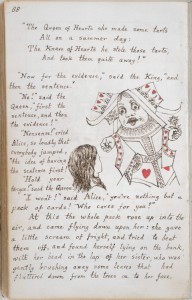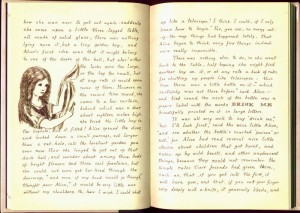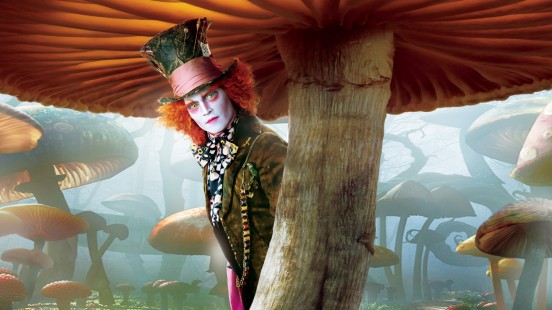Given its continued popularity, it is no surprise that Alice and her Wonderland have been transformed into various remediations of the original text. During the 19th century, this remediation was comprised simply of

moving the text from the original handwritten manuscript (with Carroll’s own drawings illustrating the pages) to a published version that was accessible to the public (like ours!).

However, as Alice moved into the 20th and 21st centuries, the mediums in which this story was expressed exploded. From Disney’s 1951 cartoon version of Alice in Wonderland to poems to exhibits to ebooks, etc…, there is too much to be explored in this single post (if you are interested in the wide array of interpretations of Alice that people have come up with, click here).
The one remediation that I particularly wanted to focus on was Disney’s remediation of its own remediation (whoa, said remediation quite a few times there): the 2010 version of Alice in Wonderland. While the movie seems to depict a combination of Carroll’s tales Alice in Wonderland and Through the Looking Glass, the transportation of the story of Alice was the thing I found most interesting about this edition. Directed by Tim Burton and littered with stars from Johnny Depp to Helena Bonham-Carter, this 2010 version removes Alice from the realm of a children’s story/film and places her firmly in the world of a more mature audience. This movie changed the way in which adults (and young adults) interacted with Alice.
No longer was Alice a story to be read to children when they were sick; instead it became a surrealist reimagining of the world that people of any age could engage with. Although the movie is bright and colourful as is typical of a children’s film, the darker themes hinted at through Depp’s frantic performance and the sadistic portrayal of the Queen of Hearts seem to unlock the story of Alice.
To me, this is one of the most successful remediations of this book because it does not simply recreate what has been presented on the pages, it explores, play with, and flips the expectations of a now classic story.
To get a taste of Disney’s recreation:
